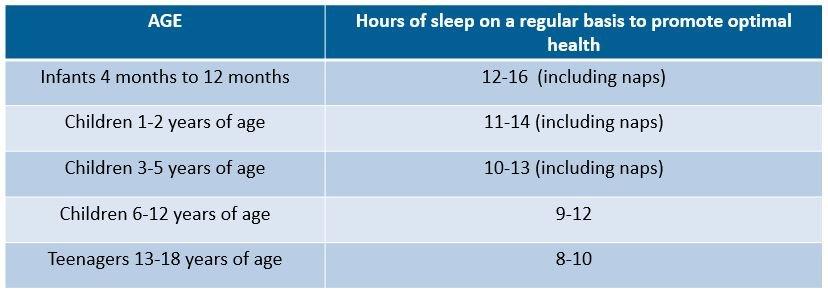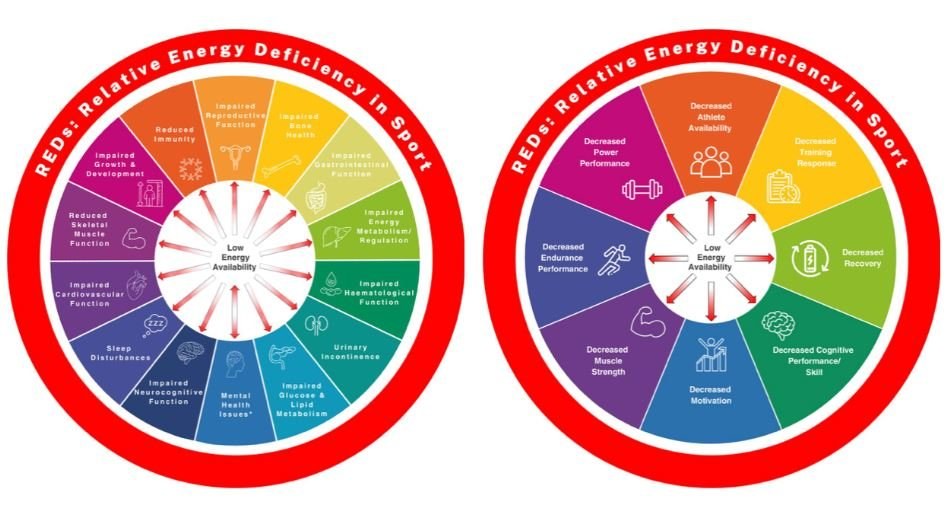What is gymnastics medicine?

Gymnastics Medicine
Gymnastics’ unique language, patterns of injury, and predominantly pediatric-age population warrant specialty knowledge in all three of these aspects when optimally caring for a gymnast. As an example, prolonged wrist or back pain in a gymnast often goes misdiagnosed as strains or sprains due to unfamiliarity with growth plate-related stress injuries in the pediatric population. In reality, these may actually represent distal radial epiphysitis (Gymnast’s Wrist) or Spondylolysis, both of which can have career-altering repercussions if discovered late in their course. Even more important is identifying and addressing the underlying biomechanical risk factors that contribute to the development of these injuries to prevent recurrence or the initial injury altogether.
Another difficulty for providers unfamiliar with the rigor of the sport, is its year-round nature (David et al 2018). Not accounting for training and competition schedules and a lack of knowledge of sport-specific activity modifications can lead to what is perceived to be unreasonable medical recommendations which can negatively impact the therapeutic alliance. Prior studies have found single sport specialization before puberty to be an independent risk factor for injury (Jayanthi et al 2015). Additionally, Jayanthi et al found practicing a single sport more hours per week than the athlete’s chronologic age having increased risk for overuse injuries. That said, most gymnasts specialize by the age of 8 (Sweeney 2021) and studies from Caine et al and Kolt et al demonstrated preadolescent and adolescent gymnasts frequently train more than twenty hours per week with elite gymnasts training even upwards of 30-42 hours per week. Although recommended amounts of sleep vary by age, balancing training demands, schoolwork, and sleep can also be a challenge.

A study by Sufrinko et al in 2015 involving 7,150 athletes aged 14-17 found athletes getting less than 5 hours of sleep performed worse on computerized neurocognitive testing (ImPact) than than those who slept more. The findings demonstrated worse verbal memory, visual memory, visual motor speed, and reaction times. A 2014 study by Milewski et al found that consistently getting less than 8 hours of sleep was associated with a nearly doubling of injury risk. Another study of elite adolescent athletes of 16 different sports monitored over 52 weeks by von Rosen et al in 2017 found a combination of the following indices had the strongest risk factors for injury:
- Decreased sleep volume (8 or less hours of sleep during weekdays)
- Increase in training variables
- Training intensity
- Training load
Another important factor for optimal athlete health and performance is nutrition and proper fueling. One commonly undiagnosed entity in gymnasts and other athletes is Relative Energy Deficiency in Sport (REDS) and thanks to the work of Ackerman et al is becoming increasingly better understood.
REDS is a chronic imbalance between energy expenditure and intake that can affect almost every organ system in the body and thus manifest in a variety of ways such as progressively decreased performance or skill loss, chronic fatigue, recurrent stress fractures or upper respiratory illness, loss of menstruation in females, or nocturnal tumescence in males and can have a multitude of negative effects on performance (Ackerman et al 2023).

To maintain lean body mass and ensure adequate caloric, macronutrient and micronutrient intake, it is recommended athletes eat 3 meals per day plus pre- and post-exercise snacks (La Bounty 2011). It is not uncommon that athletes and parents feel protein or dietary supplements are necessary to meet nutritional needs, but a position statement from the International Society of Sports Nutrition corroborated that all nutritional and caloric requirements of athletes can be obtained through diet alone (Jaeger 2017). Additionally, the works of Areta et al in 2013 found consuming 20g of protein per meal produced greater muscle protein synthesis compared to the consumption of large amounts of protein (40g) in one sitting despite the same total amount of protein intake per day. While it is recommended and beneficial for any athlete to consult a sports dietitian for individualized fueling recommendations, The American College of Sports Medicine (ACSM) compiled general recommendations for hydration and nutritional optimization for sports performance in their 1st Edition of ACSM’s “Sports Medicine: A Comprehensive Review” (O’Connor 2012):
General ACSM Sports Nutrition Recommendation
- Fluid Replacement: Goal is to prevent greater than 2% fluid weight loss which is associated with decreased endurance performance, balance control, and increased rate of perceived exertion (RPE)
- 400-600 mL (14-22 oz) of fluid 2 hours prior to exercise
- 150-350 mL (5-12 oz) of water every 15-20 minutes of exercise if the activity is less than 1 hour
- A beverage containing 6-8% carbohydrates (CHO) and electrolytes (sodium and chloride) is beneficial for exercise lasting greater than 1 hour
- Sports Drinks: Not needed during exercise less than 1 hour
Sports drinks promote rehydration, electrolyte replacement from sweating, and maximize muscle glycogen repletion after exercise
- Strength Athletes [Gymnasts] (High Intensity, Short Duration)
- General Daily Macronutrients
- Carbohydrates (CHO) - 6-10g/kg of body weight (55-70% of total energy)
- Protein - 1.2-1.7g/kg of body weight (10-35% of total energy)
- Fats - No greater than 30% [Body Builders = 30%]
- Pre-exercise meals
- Consuming a meal or snack 3-4 hours before heavy training or competition may have performance benefit
- Minimizes hunger, ensures food digestion and gastric emptying and maximizes endogenous glycogen stores
- Small meal 1 hour or less before heavy training or competition does not benefit performance
- Low Glycemic Index (GI < 55) Foods; average 90-minute blood glucose peak
- Consuming a meal or snack 3-4 hours before heavy training or competition may have performance benefit
- Post-exercise recovery meals:
- High glycemic index (GI > 70) foods to promote glycogen recovery; average 30-minute blood glucose peak
- Approximately 50g CHO snack within 30 minutes enhances glycogen synthesis
Additionally, 10-15g of protein increases muscle protein synthesis and improves nitrogen balance compared to CHO alone
- General Daily Macronutrients
- Endurance Athletes (Low Intensity, Long Duration)
- General Daily Macronutrients
- Carbohydrates (CHO) - 6-10g/kg of body weight (55-70% of total energy)
- Protein - 1.2-1.4g/kg of body weight (10-35% of total energy)
- Fats - May decrease to only 20-25% to consume adequate amounts of CHO
- Pre-exercise meals
- Consuming a meal or snack 3-4 hours before heavy training or competition may have performance benefits
- Minimizes hunger, ensures food digestion and gastric emptying, and maximizes endogenous glycogen stores
- Small meal 1 hour or less before heavy training or competition does not benefit performance
- Low Glycemic Index (GI < 55) Foods; average 90-minute blood glucose peak
- Higher fat diet (>65% energy) at least 5 days prior to competition enhances fatty acid oxidation which can promote performance in low-intensity long-duration activities for ultra-endurance athletes
- Consuming a meal or snack 3-4 hours before heavy training or competition may have performance benefits
- Post-exercise recovery meals
- High glycemic index (GI > 70) foods to promote glycogen recovery; average 30-minute blood glucose peak
- Approximately 50g CHO snack within 30 minutes enhances glycogen synthesis
- Additionally, 10-15g of protein increases muscle protein synthesis and improves nitrogen balance compared to CHO alone
- 1.0-1.5g/kg of CHO over several hours after endurance exercise
- General Daily Macronutrients
Despite the culture of year-round training with minimal breaks in gymnastics and other factors which can predispose gymnasts to REDS, the works of Casey et al in a 2022 study of 137 elite gymnasts during training interruptions due to the pandemic found that 2-3 week rest periods were not as detrimental to performance as previously thought and that there was no statistically significant difference in time to return to prior level of gymnastics for any increased time off even after 4 weeks in this population.
Although much of the research for decreasing injury risk is adapted from sports outside gymnastics and can be difficult to apply in gymnastics, the following can be helpful guidelines for minimizing injury, especially in prepubescent athletes, based on prior literature:
- Incorporate cross-training (Kolt et al 1999)
- Train fewer hours per week than the athlete’s chronologic age (Kolt et al 1999)
- More than 8 hours of sleep per night regularly (Milewski et al 2014, von Rosen et al 2017)
- Periodizing flexibility and conditioning regimens
- Maximize training adaptations and prevent the onset of overtraining syndrome (Lorenz et al 2010)
- Gradually increasing training loads and adjusting training loads during rapid periods of growth (DiFiori et al 2006)
At TSARO, our team uses a multi-disciplinary and patient-centered approach to care for our gymnasts to prevent and recognize injuries early, modify activities to minimize time out of the gym and optimize return to full gymnastics. We are trained at recognizing and treating injuries unique to both gymnastics and pediatrics populations and take into account age, level, practice hours, competition schedule, sleep, nutrition, and biomechanical factors. We also perform gymnastics-specific biomechnical screenings to identify risk factors for injury and are trained in recognizing Relative Energy Deficiency in Sport (REDS), which affects both males and females, as Dr. Thomas trained directly with Dr. Kathryn Ackerman, the world’s foremost leading expert in REDS.
Whether you are a coach looking for education for your gym on how to keep your athletes healthy, a parent wanting to prevent injury and optimize performance of your child, or an athlete suffering from an injury, contact us to see how we can support you as the team behind your athlete.
References
David R. Bell, Eric G. Post, Kevin Biese, Curtis Bay, Tamara Valovich McLeod; Sport Specialization and Risk of Overuse Injuries: A Systematic Review With Meta-analysis. Pediatrics September 2018; 142 (3): e20180657. 10.1542/peds.2018-0657
Jayanthi, N. A., LaBella, C. R., Fischer, D., Pasulka, J., & Dugas, L. R. (2015). Sports-specialized intensive training and the risk of injury in young athletes: a clinical case-control study. The American journal of sports medicine, 43(4), 794–801.
Sweeney EA, Howell DR, Seehusen CN, Tilley D, Casey E. Health Outcomes among former female collegiate gymnastics: The influence of sports specialization, concussion, and disordered eating. Orthopaedic Journal of Sports Medicine. 2021;9(7_suppl3).
Caine D, Cochrane B, Caine C, Zemper E. An epidemiologic investigation of injuries affecting young competitive female gymnasts. Am J Sports Med. 1989;17(6):811–20.
Kolt, G.S., & Kirkby, R.J. (1999). Epidemiology of injury in elite and subelite female gymnasts: a comparison of retrospective and prospective findings. British Journal of Sports Medicine, 33, 312 - 318.
Sufrinko A, Johnson EW, Henry LC. The influence of sleep duration and sleep-related symptoms on baseline neurocognitive performance among male and female high school athletes. Neuropsychology. 2016 May;30(4):484-91. doi: 10.1037/neu0000250. Epub 2015 Nov 16. PMID: 26569029.
M Milewski et al. Chronic Lack of Sleep is Associated with Increased Sports Injuries in Adolescent Athletes. J Pediatr Orthop. 34(2):129-133, 2014.
von Rosen P, Frohm A, Kottorp A, Fridén C, Heijne A. Multiple factors explain injury risk in adolescent elite athletes: Applying a biopsychosocial perspective. Scand J Med Sci Sports. 2017 Dec;27(12):2059-2069. doi: 10.1111/sms.12855. Epub 2017 Mar 29. PMID: 28207969.
Lorenz DS Reiman MP Walker JC. Periodization: Current review and suggested implementation for athletic rehabilitation. Sports Health. 2010;2(6):509‐518.
DiFiori JP, Caine DJ, Malina RM. Wrist pain, distal radial physeal injury, and ulnar variance in the young gymnast. Am J Sports Med. 2006;34(5):840–9.
Ackerman KE, Rogers MA, Heikura IA, Burke LM, Stellingwerff T, Hackney AC, Verhagen E, Schley S, Saville GH, Mountjoy M, Holtzman B. Methodology for studying Relative Energy Deficiency in Sport (REDs): a narrative review by a subgroup of the International Olympic Committee (IOC) consensus on REDs. Br J Sports Med. 2023 Sep;57(17):1136-1147. doi: 10.1136/bjsports-2023-107359. PMID: 37752010.
Jäger R, Kerksick CM, Campbell BI, Cribb PJ, Wells SD, Skwiat TM, Purpura M, Ziegenfuss TN, Ferrando AA, Arent SM, Smith-Ryan AE, Stout JR, Arciero PJ, Ormsbee MJ, Taylor LW, Wilborn CD, Kalman DS, Kreider RB, Willoughby DS, Hoffman JR, Krzykowski JL, Antonio J. International Society of Sports Nutrition Position Stand: protein and exercise. J Int Soc Sports Nutr. 2017 Jun 20;14:20. doi: 10.1186/s12970-017-0177-8. PMID: 28642676; PMCID: PMC5477153.
Areta JL, Burke LM, Ross ML, Camera DM, West DW, Broad EM, Jeacocke NA, Moore DR, Stellingwerff T, Phillips SM, Hawley JA, Coffey VG. Timing and distribution of protein ingestion during prolonged recovery from resistance exercise alters myofibrillar protein synthesis. J Physiol. 2013 May 1;591(9):2319-31. doi: 10.1113/jphysiol.2012.244897. Epub 2013 Mar 4. PMID: 23459753; PMCID: PMC3650697.
La Bounty PM, Campbell BI, Wilson J, Galvan E, Berardi J, Kleiner SM, Kreider RB, Stout JR, Ziegenfuss T, Spano M, Smith A, Antonio J. International Society of Sports Nutrition position stand: meal frequency. J Int Soc Sports Nutr. 2011 Mar 16;8:4. doi: 10.1186/1550-2783-8-4. PMID: 21410984; PMCID: PMC3070624.
O'Connor, F. G. (2012). ACSM's Sports Medicine: A comprehensive review. Wolters Kluwer Health.
Casey, E, Bonanno, J, Cheng, J, et al. Return to sport in elite gymnastics: Unprecedented training interruptions provide lessons for the future. PM&R: The Journal of Injury, Function and Rehabilitation. 2022; 1- 10.

